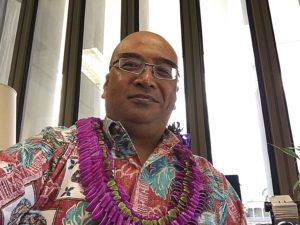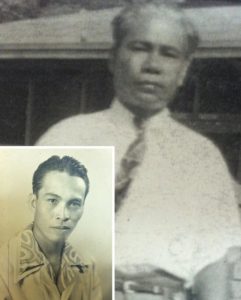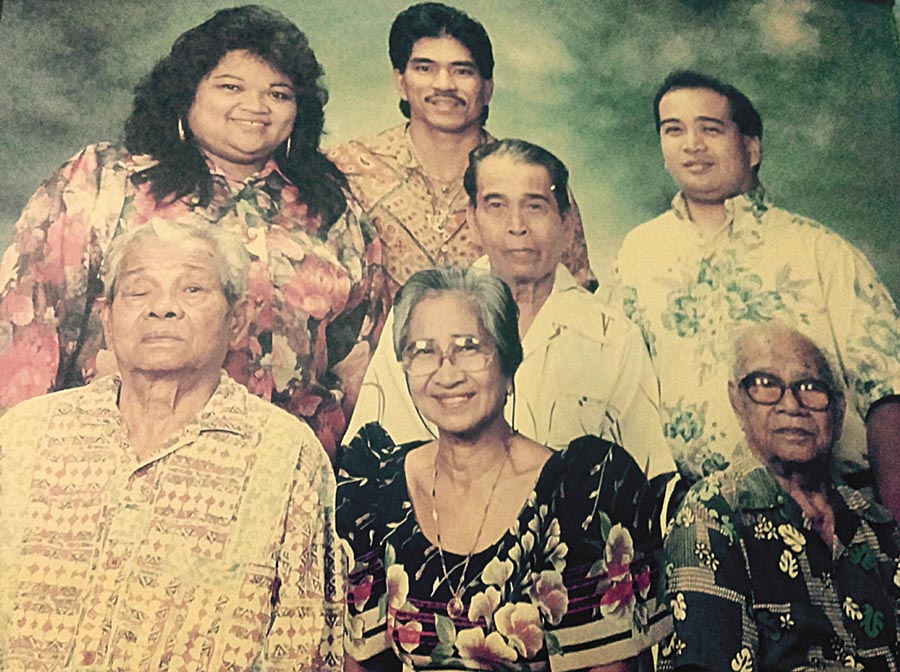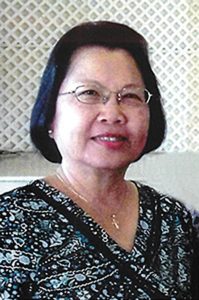All photos courtesy of Gil S.C. Keith-Agaran

This Sakada Offspring is one of those legislators from Maui who is considered “quiet but effective.” Sen. Gilbert S.C. Keith-Agaran represents Senate District 5 which includes the Central Maui communities of Kahului, Pu‘unēnē, Waihe‘e and Wailuku. He is the current Vice Chairperson of the powerful Senate Ways & Means Committee, after chairing the influential Senate Judiciary and Labor Committee. Governor Neil Abercrombie appointed him to the District 5 Senate seat in January 2013 when Shan Tsutsui became Lt. Governor. He was elected to complete Lt. Gov. Tsutsui’s Senate term in November 2014. He ran unopposed for re-election to a second four year term in August 2016. Sen. Keith-Agaran previously represented House of Representatives District 9. Governor Linda Lingle appointed him to complete the unexpired term of the late Bob Nakasone in January 2009. He won the seat in November 2010 and was re-elected on August 11, 2012.

Manuel Coloma, (inset) Gil’s father.
Senator Keith-Agaran received a B.A. in History from Yale College and holds a J.D. from Boalt Hall School of Law at the University of California at Berkeley. He practiced law with Carlsmith Ball in that firm’s Honolulu and Wailuku offices before going into public service. He served in Gov. Ben Cayetano’s Administration for eight years, two years as the Department of Land and Natural Resources (DLNR) Chairman (2000–2002) and four years as the Deputy Director under Chairman Michael Wilson(1995–1998). He also worked as the Deputy Director of the Department of Commerce and Consumer Affairs (1999–2000) and briefly as the Director of the Department of Labor and Industrial Relations (2000). He also served as Public Works Director for the County of Maui (2003–2005). He returned to private law practice in 2005 when he joined Wailuku attorney Anthony Takitani and formed Takitani and Agaran Law Corporations. The firm added David Jorgensen in 2011 and the three lawyers formed Takitani, Agaran, and Jorgensen LLLP.
Sen. Keith-Agaran is a Maui native, the son of Lydia Agaran Coloma and the late Manuel Coloma. He was adopted and raised by his maternal grandparents, Lino and Laureana Agaran, who lived in Lower Pā‘ia, Orpheum Camp near the Pā‘ia Sugarcane Mill. He grew up in Pā‘ia during the long transition of that mill town to a cosmopolitan windsurf mecca. He attended Doris Todd Memorial Christian Day School located above the old Pā‘ia sugar mill and was graduated from the Kahului campus of Maui High School. Sen. Keith-Agaran’s father, Manuel, a 1946 Sakada, worked as a sugar cane irrigator at Pioneer Mill and at HC&S for nearly forty years. Lydia Coloma worked at the Maui Pine Cannery. Manuel and Lydia Coloma were both members of the ILWU, Local 142. His family hails from the Badoc-Pinili region of Ilocos Norte, the Philippines. Sen. Keith-Agaran is married to Kallie Keith-Agaran and raised a niece, Leah Agaran who graduated from college in 2013.

The Agaran Sakadas according to Sen. Keith-Agaran, came to Hawai‘i when sugar still ruled. Lino, and his cousin Teodoro, or “Doro,” arrived on Maui on April 5, 1928 while brother Juan, or “Uncle Johnny,” landed on Hawai‘i Island in November 1929. His Uncle Toribio came earlier to either Kaua‘i or Lāna‘i. All four are gone now. Sen. Keith-Agaran shared his reflection about his grandfather Lino. He said that when he was growing up in Pā‘ia in the last century, there were no Filipino restaurants or Filipino caterers. His grandfather Lino was one of those Filipinos in their neighborhood who would cook the food needed for big parties. He and his buddies would procure and then butcher the animals needed, pick up cans of peas and tomato paste, pimentos and other groceries from the old Ah Fook’s Supermarket and Noda Market. Then they spent the day cooking in their silyasis, or “big woks,” the various dishes ordered by the party host. According to Sen. Keith-Agaran, his favorite dish was igado. He also added that the most interesting dish was the deep fried pork bones with some meat on it, dipped in eggs and flour batter similar to tempura style. He also reminisced that he ate ketchup with chicharron and lechon. However, grandpa Lino did not make cancanen, or Filipino desserts. Mostly the women in those days made the various desserts like suman, bibingka, cascaron, patupat, baduya, etc.

Throughout his life, Senator Keith-Agaran noticed that Maui has been shifting away from sugar’s heyday. While he was away at college, Pu‘unēnē town disappeared into Central Maui sugar fields and big box parking lots. Pā‘ia converted to windsurfing hostels and vacation rentals, fashion shops, Mana foods and quaint eateries. Pā‘ia Mill stood dead on Baldwin Avenue. The camps were largely gone or redeveloped.
Senator Keith-Agaran also shared his reflection on the closing of H.C.&S: “Plantation work brought my family to the islands. Sugar formed the common cultural DNA shared by my Filipino, Portuguese, Japanese, Chinese, Hawaiian and Hapa classmates. We’ve lived through other sugar and pineapple closings but to have sugar mark its final end in our community feels different. No more black snow of small kids times. No more familiar pungent smells floating to town on the winds.” He remembered reservoir swimming pools and tournahauler inner tubes as trampolines. He saw his parents going to bed early and awoke before dawn to go to work. The hanawai, or “irrigation” gang like his father Manuel would jump into red pick up trucks for the drive to their assigned fields.
Senator Keith-Agaran solemnly commented: “The end of sugar really marks my childhood’s end. But rather than cavalierly focusing abruptly and insensitively on what’s next, I can’t help but cherish the flesh and blood folk who lived through plantation days.” The loss is personal to Sen. Keith-Agaran. The loss is personal for all of us especially those who are the Sakadas’ Offsprings.
